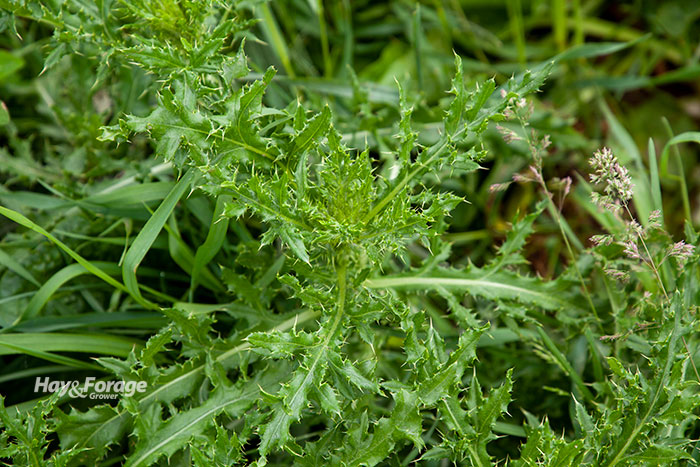
Despite seasonably warm temperatures in many parts of the Midwest, winter jackets, hats, and gloves will soon be retrieved from coat closets to combat the cold that is starting to creep in. Weeds must prepare for winter as well, and this transition period is a great time to tackle perennial pests.
Meaghan Anderson, with Iowa State University Extension, explains that perennial and biennial weeds in pastures begin shifting their energy reserves from their shoots to vegetative reproductive structures when temperatures decline. Storing energy in rootstocks enables weeds to survive winter and reappear the following growing season.
One way to alleviate this recurring pest pressure is to apply systemic herbicides, and the extension field specialist says fall is one of the best seasons to do so.
“Systemic herbicides applied at this time are translocated along with the energy reserves to the reproductive structures, therefore providing more consistent control than applications made at most other times of the year,” Anderson asserts.
Growth regulator herbicides are commonly used in pastures, and Anderson says some products are more effective than others. Some herbicides are more expensive, but their ability to control weeds has been shown to offer better results than their conventional counterparts.
“While products containing picloram and aminopyralid typically cost more than the traditional pasture treatment of 2,4-D and dicamba, they generally provide better long-term control of perennials,” Anderson explains. “Products containing metsulfuron-methyl provide an alternative to growth regulators,” she adds.
Mother Nature is granting producers a larger window of opportunity to spray pastures this fall by extending warm weather well into the season. Nonetheless, Anderson suggests considering the following before applying any herbicide.
Scout fields to locate target weeds. Broadcast applications may be necessary in some fields, but there are times when spot treatments are sufficient. Anderson says some perennial weeds, like Canada thistle, are often found in patches, and it is better to target these areas as opposed to spraying an entire field.
Evaluate the physical condition of weeds, too. Plants must have healthy foliage to absorb herbicides and translocate them down to their roots. Anderson says extensive weed leaf damage may compromise herbicide activity.
Read herbicide labels carefully. Labels provide information about the weeds a product controls, proper application rates, and restrictions for treated areas. Herbicide residues can be harmful to forage crops and threaten the health of animals that graze them. Follow label restrictions to maintain productive pastures.
“Residues of certain products persist in the foliage of plants in treated areas and can be moved with forage or in the waste of animals consuming forage,” Anderson states. “The herbicide residues can damage sensitive plants if moved from the application area with forage or livestock.”
Don’t spray drought-stressed crops. Many fields have recently received enough rain to recover from excessive dryness they endured earlier this year. Even so, Anderson cautions that pasture species still experiencing drought may be highly susceptible to herbicide injury.
Apply in optimal conditions. Sunny skies and daytime temperatures between 50°F and 55°F are ideal for administering herbicide. With that said, Anderson notes treatments can be successful even after a frost, but weed foliage must still be green and active.
Assess fields for the future. Instead of relying on herbicides to eliminate weeds, consider why these pests are present in the first place. Anderson suggests testing soil fertility, adjusting stocking rates, and overseeding grass to improve forage systems.
“A healthy sod should be able to prevent the establishment of most weeds,” Anderson concludes. “Herbicides are valuable tools for improving pasture quality, but they are not a substitute for good management practices.”
 Amber Friedrichsen
Amber FriedrichsenAmber Friedrichsen served as the 2021 Hay & Forage Grower editorial intern. She currently attends Iowa State University where she is majoring in agriculture and life sciences education-communications and agronomy. Friedrichsen grew up on her family’s diversified crop and livestock farm near Clinton, Iowa.

